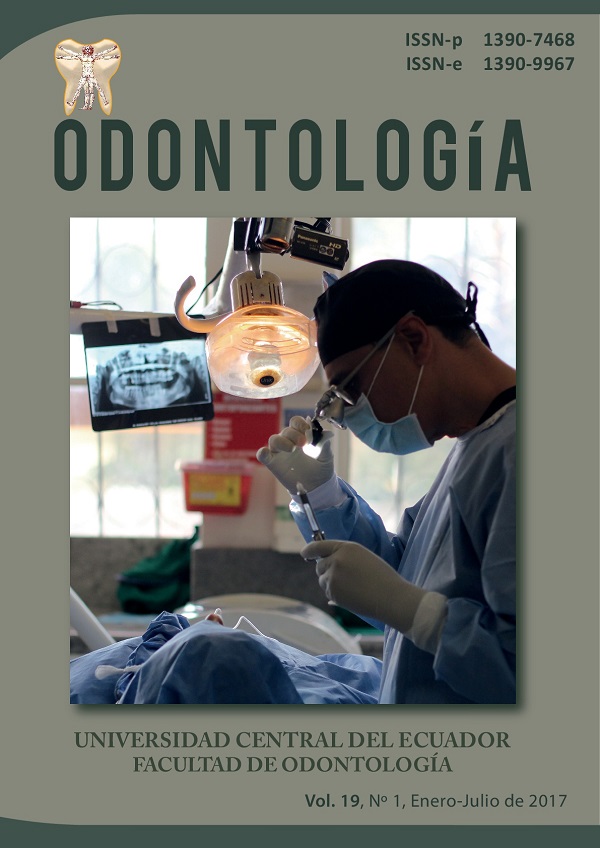Behavioral analysis of Brazilian children participating in the “Baby’s Little Mouth Program” at Gurupi-Tocantins
Keywords:
Pediatric dentistry, behavioral management, oral hygiene, preventive programsAbstract
The behavioral response of the child has been studied in some researches and is useful to predict how the child reacts to dental treatment, especially infants and young children, which is one of the greatest challenges of pediatric dentistry. Objective: To evaluate the behavioral pattern of children from 3 to 5 years of age in a preventive program in the municipality of Gurupi /Tocantins, Brazil. Materials and methods: This study was evaluated and approved by the Ethics and Research Committee. A total of 60 children, with different participation profiles of the program “Baby’s Little Mouth” were analyzed. Of these, 20 were frequent program participants, 20 were dropouts and 20 had never participated in the program before. The behavioral profile was analyzed by an external examiner, at the time of oral hygiene (prophylaxis), through the behavioral scale of Venham. Data were analyzed using Poisson regression analysis (α = 5%). Results: The children who presented the worst behavior were those who had never participated in the “Baby’s Little Mouth” program (OR=3.80; p=0.008), as well as children who did not allow brushing at home (OR=4.17; p=0.001) and those that only allowed brushing sometimes (OR=3.07; p=0.010). Conclusion: There is a positive influence of the program on psychological conditioning, on the anxiety of children and on the adoption of correct daily habits in their routines.
Downloads
References
Anderson MH, Bales DJ, Omnel KA. Modern management of dentalcaries: the cutting edge is not the dental bur. J Am Dent Assoc, 1993; 124: 37-44.
Silva JBOR, Souza IPRS, Tura LFR. Manual de orientação para profissionais e estudantes da área da saúde. Universidade José do Rosário Vellano – UNIFENAS,2006.
Possobon RF, Moraes ABA, Costa Júnior AL, Ambrosano GMB. O comportamento de crianças durante o atendimento odontológico. Psicologia: Teoria e Pesquisa, 2003; 9(1):57-64.
Kuhn E. Promoção da saúde bucal em bebês participantes de um programa educativo-preventivo na cidade de Ponta Grossa–PR. Tese (Mestrado). Escola Nacional de saúde pública. 2002.
Walter LRF, Ferelle A, Issao M. Odontologia para o Bebê: Odontopediatria do nascimento aos 3 anos. São Paulo: Artes Médicas; 1996.
Walter LRF. Odontologia para bebês: Reseña histórica. Bol Assoc Argent Odontol Niños, 1993; 32: 18-20.
Torriani DD, Teixeira AM, Pinheiro R, Goettems ML, Bonow MLM. Adaptação transcultural de instrumentos para mensurar ansiedade e comportamento em clínica odontológica infantil. Arquivos em odontologia, 2008;44(4): 17-23.
Melo MM, Walter LRF. Relação comportamental em bebês de 0 a 30 meses. Semina, 1997;18: 43-6.
Morinushi S. An evaluation of the dental health examination and guindace for one half year old children as public dental health service. Jpn Pedodont, 1980; 18(3): 485-501.
Guimarães AO, Costa ICC, Oliveira ALS. As origens, objetivos e razões de ser da Odontologia para bebês. J. Bras Odontopediatr Odontol Bebê, 2003; 6(29): 83-6.
Pereira MBB, Freire MCM. An infant oral health programme in Goiânia-GO, Brazil: results after 3 years of establishment. Braz Oral Res, 2004; 18(1): 7-12.
Zaze ACSF, Fraga RCMS, Cunha RF. Evaluation of children’s behavior aged 0-3 years during dental care: A longitudinal analysis. J Indian Soc Pedod Prev Dent, 2009; 27(3): 145-50.
Cunha RF, Zaze AC, Vieira AE, Melhado FL Sundefeld ML.Longitudinal behavioral analysis during dental care of children aged 0 to 3 years. Braz Oral Res, 2009; 23(3): 302-6.
Deliberali FD, Brusco EHC, Brusco L, Perussolo B, Patussi EG. Fatores comportamentais envolvidos no desenvolvimento da cárie precoce em crianças atendidas na clínica de Odontopediatria da Faculdade de Odontologia de Passo Fundo – RS, Brasil. RFO UPF, 2009; 14(3): 197-202.


